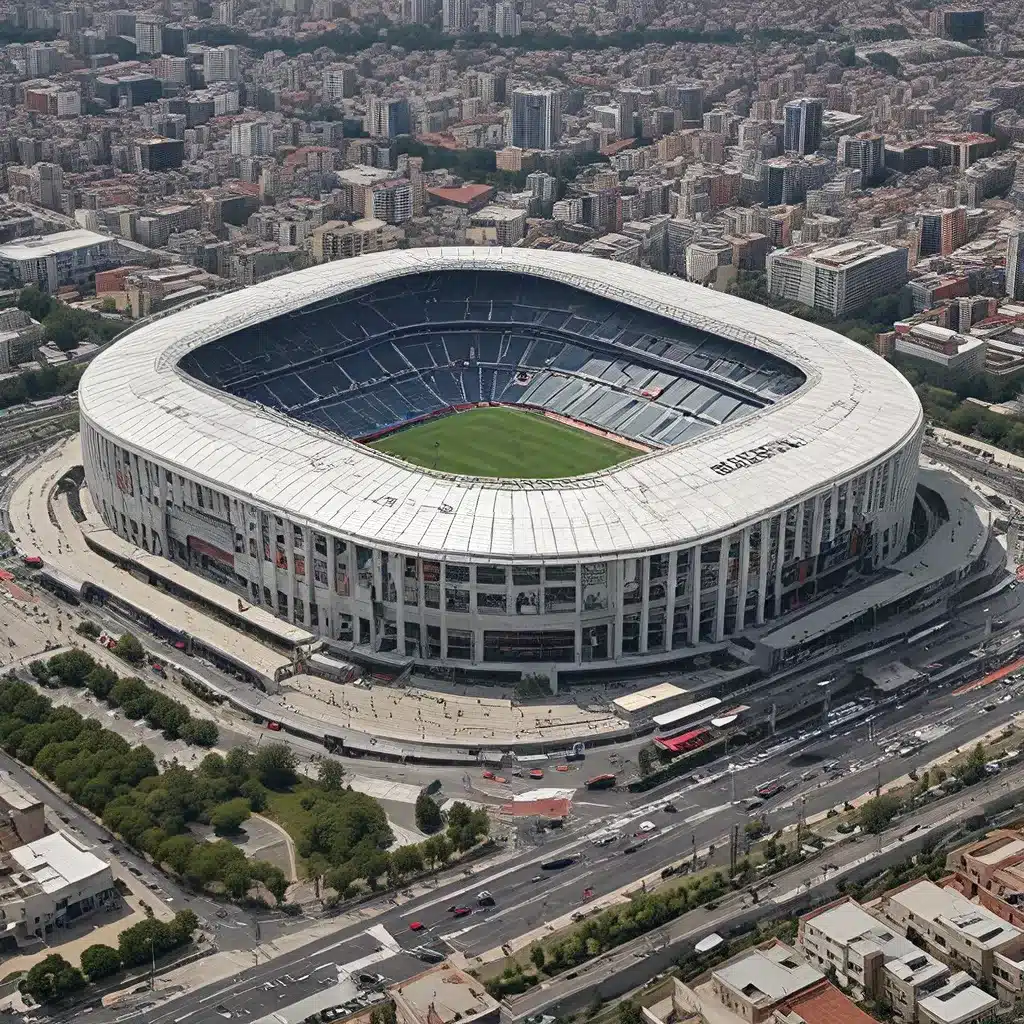
The Grandeur of Mexico’s National Stadium
Nestled in the heart of Mexico City, the Estadio Azteca stands as a testament to the country’s rich football heritage and architectural prowess. This colossal stadium, with a seating capacity of over 87,000, is not only the largest in Mexico but also one of the most iconic sporting venues in the world.
Constructed in the 1960s, the Estadio Azteca was designed by renowned Mexican architect Pedro Ramírez Vázquez. Its striking design, featuring a unique inverted-pyramid structure, has become a symbol of national pride and a source of awe for visitors from around the globe. The stadium’s sheer size and grandeur are truly breathtaking, creating an immersive and unforgettable experience for all who step within its walls.
A Storied History of Hosting Greatness
The Estadio Azteca has had the privilege of hosting some of the most significant football events in history. In 1970 and 1986, it served as the centerpiece of the FIFA World Cup, witnessing iconic matches and unforgettable moments that have been etched into the annals of the sport.
The 1970 World Cup was a particularly significant event, as it marked the first time the tournament was held in Mexico. The Estadio Azteca played host to the thrilling final between Brazil and Italy, where the legendary Pelé led his team to a historic victory, cementing their status as one of the greatest football nations in the world.
Sixteen years later, the stadium once again took center stage as the venue for the 1986 World Cup. This time, the spotlight shone on the Diego Maradona-led Argentine team, who captivated audiences with their memorable performances, including the infamous “Hand of God” goal against England. The Estadio Azteca’s reputation as a football mecca was further solidified, becoming a hallowed ground for the sport’s most iconic moments.
Beyond the World Cup: A Diverse Sporting Legacy
While the FIFA World Cup undoubtedly stands as the Estadio Azteca’s most prominent claim to fame, the stadium has also hosted a wide range of other sporting events over the years. It has been the home ground of the Club América football club, one of the most successful and popular teams in the Mexican league. The stadium has also played host to various national team matches, as well as international club competitions such as the CONCACAF Champions League.
In addition to football, the Estadio Azteca has opened its doors to other sports, including American football. The stadium has welcomed the NFL for regular-season games, further adding to its reputation as a versatile and world-class venue.
Architectural Marvels and Technological Advancements
The Estadio Azteca’s architectural design is a true marvel, blending traditional Mexican elements with modern engineering feats. The inverted-pyramid structure, with its distinctive sloping roof, not only creates an awe-inspiring visual but also serves practical purposes. The design helps to amplify the crowd’s roar, creating an intense and electrifying atmosphere that envelops the players and spectators alike.
Over the years, the stadium has undergone numerous renovations and upgrades to keep pace with the evolving demands of modern sports. The most recent overhaul, completed in 2016, saw the installation of a state-of-the-art retractable roof. This innovative feature allows for the venue to be used during inclement weather, further enhancing the stadium’s versatility and appeal.
Additionally, the Estadio Azteca has embraced technological advancements to improve the fan experience. The introduction of modern security systems and seamless ticketing solutions have made the venue more accessible and secure for all visitors. The stadium’s commitment to enhancing the overall experience for its patrons is a testament to its desire to remain at the forefront of the industry.
A Beacon of Mexican Pride and Identity
Beyond its sports legacy, the Estadio Azteca has become a symbol of Mexican pride and identity. The stadium’s iconic design, with its distinct Aztec-inspired elements, reflects the country’s rich cultural heritage and its commitment to preserving its architectural traditions.
The venue’s name, “Estadio Azteca,” further reinforces this connection to Mexico’s indigenous roots. The Aztec Empire, known for its remarkable achievements in engineering and urban planning, has undoubtedly influenced the stadium’s grand and imposing presence.
Visiting the Estadio Azteca is not just about witnessing a football match; it is an opportunity to immerse oneself in the essence of Mexico. The stadium’s towering presence, its vibrant atmosphere, and its deep-rooted cultural significance all contribute to an unforgettable experience that truly captures the spirit of the nation.
Embracing the Future: Challenges and Opportunities
As the Estadio Azteca continues to evolve, it faces both challenges and opportunities. The stadium’s aging infrastructure and the need to maintain its competitive edge in the global sports landscape have necessitated ongoing investments and improvements.
Safety and security have also emerged as crucial concerns, as the Mexican football industry has grappled with increasing instances of fan violence and unrest. The stadium’s management has recognized the need to address these issues head-on, leading to the implementation of advanced security measures and fan-experience initiatives.
Despite these challenges, the Estadio Azteca remains committed to its role as a premier sporting venue and a beloved icon of Mexican culture. As the country’s national stadium, it continues to captivate audiences and inspire generations of football enthusiasts, both in Mexico and around the world.
Conclusion: A Legacy of Greatness
The Estadio Azteca stands as a testament to Mexico’s enduring passion for the beautiful game. Its towering presence, rich history, and architectural brilliance have made it a global destination for football enthusiasts and a source of immense national pride.
As the stadium continues to evolve and adapt to the changing demands of the industry, it remains a beacon of excellence, showcasing the country’s commitment to preserving its sports heritage while embracing the future. The Estadio Azteca’s legacy will undoubtedly continue to inspire and captivate visitors for generations to come, cementing its status as one of the most iconic stadiums in the world.

